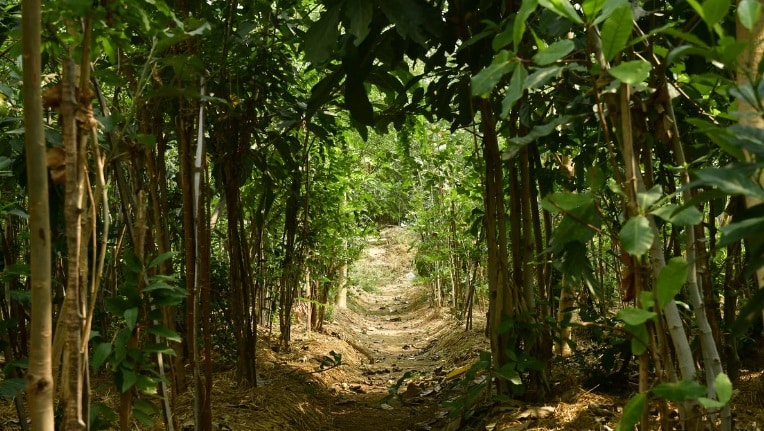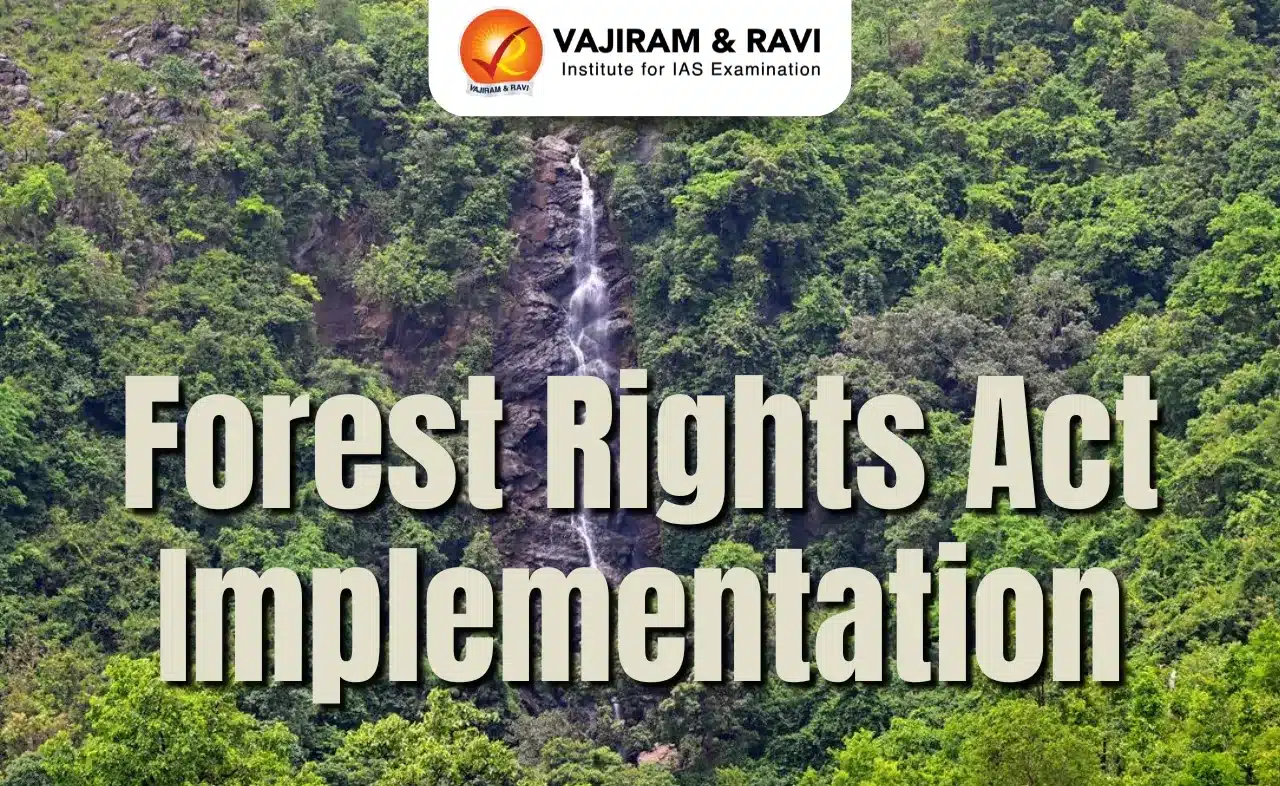What’s in today’s article?
- Why in news?
- What are Miyawaki forests?
- What are the Key principles of the Miyawaki Method?
- What are the Benefits of Miyawaki Method?
Why in news?
- PM Modi during his latest ‘Mann ki baat’ episode spoke about Miyawaki plantation, the Japanese method of creating dense urban forests in a small area.
- The PM also cited the example of a Kerala-based teacher, Raafi Ramnath, who used the Miyawaki technique to transform a barren land into a mini forest called Vidyavanam by planting 115 varieties of trees.
- The Brihanmumbai Municipal Corporation (BMC) has also been creating Miyawaki forests in several open land parcels of Mumbai.
What are Miyawaki forests?
- Miyawaki forests or Miyawaki technique, refer to a unique approach to afforestation and ecological restoration developed by Japanese botanist Dr. Akira Miyawaki.
- The methodology was developed in the 1970s, with the basic objective to densify green cover within a small parcel of land.
- The method involves creating dense, multi-layered forests that grow rapidly and mimic the natural biodiversity of native forests.
- This method involves planting two to four different types of indigenous trees within every square metre.
- The plants used in the Miyawaki method are mostly self-sustaining and don’t require regular maintenance like manuring and watering.
- In this method, the trees become self-sustaining and they grow to their full length within three years.
·
Image caption: What is the Miyawaki Method
What are the Key principles of the Miyawaki Method?
- Biodiversity:
- Planting numerous native species in close proximity to encourage natural competition, symbiotic relationships, and the development of a self-sustaining ecosystem.
- Dense planting:
- High-density planting of trees ensures that the canopy closes quickly, minimizing sunlight reaching the ground.
- It reduces the weed growth, thus enhancing the growth of tree saplings.
- High-density planting of trees ensures that the canopy closes quickly, minimizing sunlight reaching the ground.
- Soil preparation:
- The soil is carefully prepared by adding organic matter, nutrients, and microorganisms to create a fertile and conducive environment for tree growth.
- Mulching:
- Mulch is applied to the forest floor to retain moisture, suppress weed growth, and enhance soil fertility.
- Regular maintenance:
- Proper care and maintenance, such as watering, weeding, and monitoring, are crucial during the initial years to ensure the successful establishment of the forest.
What are the Benefits of Miyawaki Method?
- Rapid forest development:
- Miyawaki forests have a remarkable growth rate, with trees reaching maturity in a much shorter time compared to traditional plantations.
- This is due to the dense planting and carefully prepared soil, which promote rapid canopy closure and efficient resource utilization.
- A study revealed that Miyawaki forests grow 10x faster, are 30 x denser and contain 100x more biodiversity.
- Miyawaki forests have a remarkable growth rate, with trees reaching maturity in a much shorter time compared to traditional plantations.
- High biodiversity:
- The Miyawaki Method emphasizes the planting of a wide variety of native species in close proximity.
- These forests become thriving habitats for birds, insects, and other wildlife, contributing to overall ecosystem health and resilience.
- Enhanced carbon sequestration:
- The dense vegetation and rapid growth of these forests enable efficient carbon absorption, helping to mitigate climate change and reduce greenhouse gas emissions.
- Improved soil quality:
- The careful soil preparation in the Miyawaki Method results in the enrichment of soil fertility and structure.
- Noise and air pollution reduction:
- Miyawaki forests planted in urban areas can help mitigate noise pollution by acting as sound barriers and absorbing sound waves.
- Additionally, they contribute to improving air quality by absorbing pollutants and particulate matter, thereby reducing air pollution levels.
- Sustainable water management:
- The dense vegetation of Miyawaki forests act as natural sponges, absorbing rainfall and reducing runoff, thus contributing to better water retention and preventing water pollution.
- Regulates surface temperature
- Miyawaki forests can help regulate surface temperatures, particularly in urban areas where the urban heat island effect is a concern.
- The urban heat island effect refers to the phenomenon where urban areas experience higher temperatures compared to surrounding rural areas.
- This is due to human activities, the presence of buildings and pavement, and the lack of vegetation.
- Miyawaki forests can help regulate surface temperatures, particularly in urban areas where the urban heat island effect is a concern.
Q1) What is carbon sequestration?
Carbon sequestration refers to the process of capturing and storing carbon dioxide (CO2) or other greenhouse gases from the atmosphere to mitigate climate change. It involves removing carbon dioxide from the atmosphere and depositing it in long-term storage locations, preventing its release back into the atmosphere.
Q2) What is Biodiversity?
Biodiversity refers to the variety of living organisms, including plants, animals, microorganisms, and their ecosystems, as well as the genetic diversity within species. It encompasses the richness and variety of life on Earth, from the tiniest bacteria to the largest animals and the complex interactions between them.
Source: PM Modi talks of Miyawaki forests in Mann ki Baat: What is this method, also being used in Mumbai | Reforest Action | TimesofIndia
Last updated on June, 2025
→ UPSC Notification 2025 was released on 22nd January 2025.
→ UPSC Prelims Result 2025 is out now for the CSE held on 25 May 2025.
→ UPSC Prelims Question Paper 2025 and Unofficial Prelims Answer Key 2025 are available now.
→ UPSC Calendar 2026 is released on 15th May, 2025.
→ The UPSC Vacancy 2025 were released 1129, out of which 979 were for UPSC CSE and remaining 150 are for UPSC IFoS.
→ UPSC Mains 2025 will be conducted on 22nd August 2025.
→ UPSC Prelims 2026 will be conducted on 24th May, 2026 & UPSC Mains 2026 will be conducted on 21st August 2026.
→ The UPSC Selection Process is of 3 stages-Prelims, Mains and Interview.
→ UPSC Result 2024 is released with latest UPSC Marksheet 2024. Check Now!
→ UPSC Toppers List 2024 is released now. Shakti Dubey is UPSC AIR 1 2024 Topper.
→ Also check Best IAS Coaching in Delhi






















